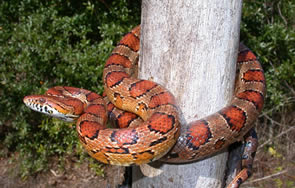
Elaphe guttata
Photo by JD Willson
Description: Corn snakes are rather large snakes distinguished by squarish blotches of red on an orange, brown or gray background. Alternating rows of smaller blotches run along their sides. In the Coastal Plain, corn snakes are generally much brighter, with more orange in their background color, than those found in other parts of the state. Corn snakes have weakly keeled scales. The young are patterned like the adults, except the blotches on their backs are usually much darker.
Feeding/Diet: Corn snakes are very strong constrictors that eat primarily mice and other rodents. They may eat birds and, when young, may often feed on lizards and treefrogs.
Activity/Behavior: Corn snakes are most active at night during the warmer months.
Habitat/Range: Corn snakes are commonly found around the edges of old fields and other clearings, where they often hide under the bark of dead pine trees or under logs, old boards, and tin.
Reproduction: Corn snakes lay 7–31 eggs during the months of June and July.
Miscellaneous: Corn snakes get their name because they often inhabit barns where mice and rats feed on corn and other grains. Additionally, the black and white checkerboard belly of the corn snake somewhat resembles Indian corn. Unfortunately, corn snakes are often mistaken for copperheads and killed. They are commonly kept as pets and are generally docile when captured, though they will sometimes bite.
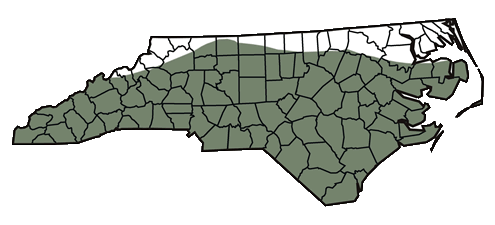
The shaded region represents the range of the corn snake in North Carolina.
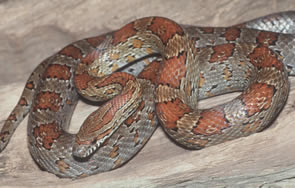
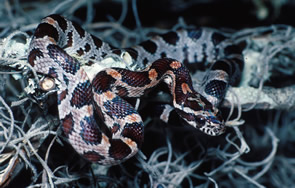
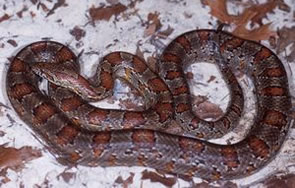
A hatchling corn snake.
Photo
by RW Van Devender
Photo by RW Van Devender
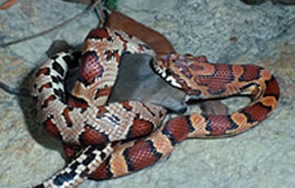
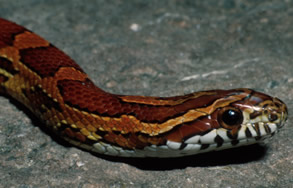
Photo by RW Van Devender
This website created by: J. Willson, Y. Kornilev, W. Anderson, G. Connette and E. Eskew.
For comments or questions contact M. Dorcas: midorcas@davidson.edu.
M. Dorcas homepage: http://bio.davidson.edu/dorcas
Davidson College, Davidson, North Carolina 28035-1719.
Text and maps from: Dorcas, M. E. 2004. A Guide to the Snakes of North Carolina. Davidson College - Herpetology Laboratory, Davidson, NC. – Copyright by Michael E. Dorcas.
Partial Funding for this website provided by a Associate Colleges of the South, National Science Foundation, and Duke Energy.
